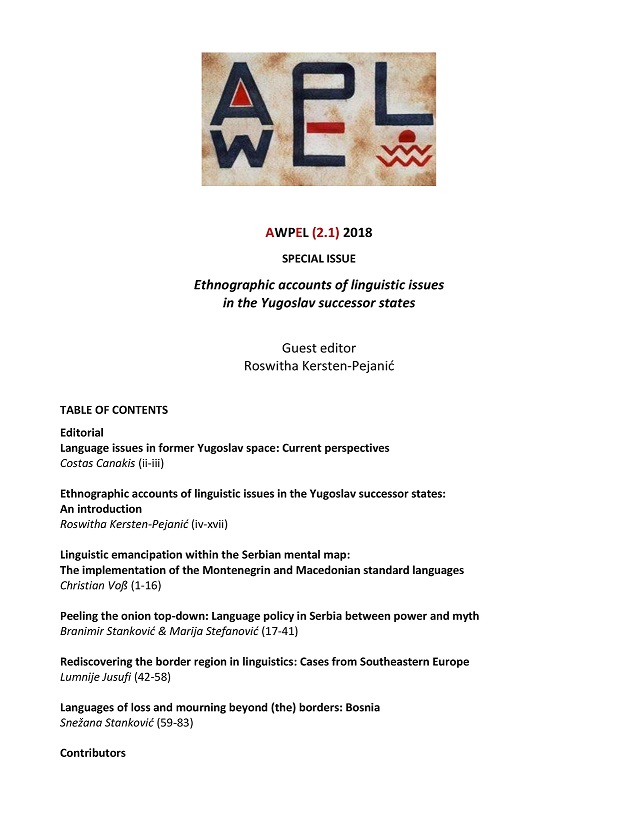Languages of loss and mourning beyond (the) borders: Bosnia
Abstract
The following paper deals with the language of commemoration of refugee women from ex-Yugoslavia, mainly Bosnia who escaped to Berlin during or after the violent conflicts in the 1990s. Handkerchiefs, personalised with names, birth and death dates of deceased family members, have arisen out of the embroidery therapy they have undertaken. These artefacts all resemble each other in that they recount the trauma of the loss of the beloved dead, whose remains were either found and then reburied, or the dead who remained missing. This micro-study aims at analyzing the verbal and visual means of expression employed by the refugee women in their embroidery. In treating language as a semiotic composition of oral and written verbal communication, image, sound, and movement, it leaves sociolinguistic discussions on the national languages which have emerged in the region behind and delves into the expression of loss and mourning inscribed on the handkerchiefs.
Article Details
- Come citare
-
Stanković, S. (2019). Languages of loss and mourning beyond (the) borders: Bosnia. Aegean Working Papers in Ethnographic Linguistics, 2(1), 59–83. https://doi.org/10.12681/awpel.20024
- Sezione
- Articles

TQuesto lavoro è fornito con la licenza Creative Commons Attribuzione 4.0 Internazionale.
Authors who publish with this journal agree to the following terms:
Authors retain copyright and grant the journal right of first publication with the work simultaneously licensed under a Creative Commons Attribution licence that allows others to share the work with an acknowledgement of the work's authorship and initial publication in this journal.
Authors are able to enter into separate, additional contractual arrangements for the non-exclusive distribution of the journal's published version of the work (e.g. post it to an institutional repository or publish it in a book), with an acknowledgement of its initial publication in this journal.
Authors are permitted and encouraged to post their work online (preferably in institutional repositories or on their website) prior to and during the submission process, as it can lead to productive exchanges, as well as earlier and greater citation of published work (See The Effect of Open Access).



